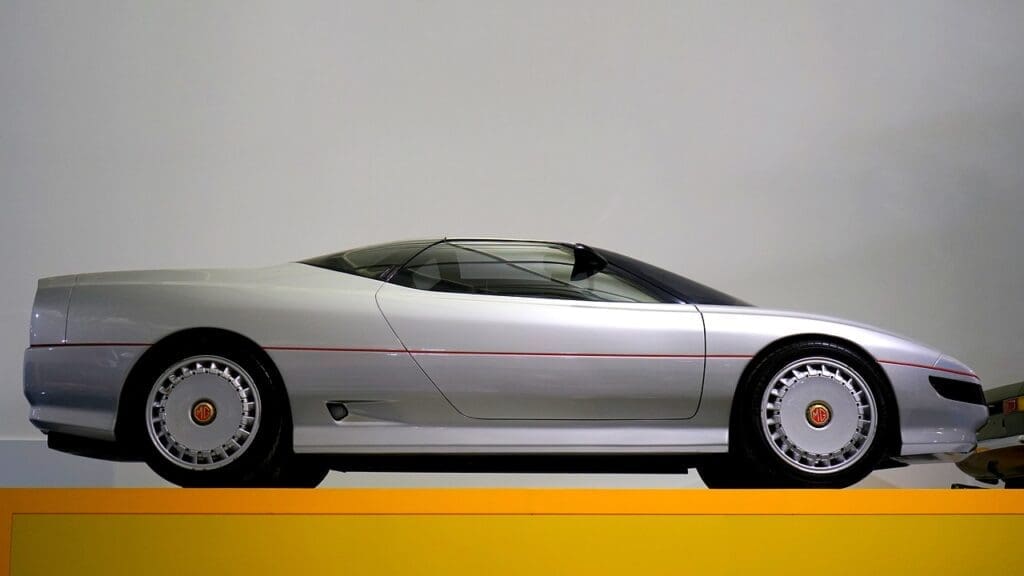If you’re looking to maximize the fuel efficiency of your Ford truck, you’ve come to the right place. With rising fuel prices and environmental concerns, finding ways to make your vehicle more fuel efficient is becoming increasingly important. In this article, we will explore some practical tips and strategies that can help you save money and reduce your carbon footprint while still enjoying the power and reliability of your Ford truck. From simple maintenance tasks to smart driving habits, we’ve got you covered in your quest for better fuel efficiency. So, let’s get started and unlock the secrets to fuel-saving success!

How to Make Your Ford Truck More Fuel Efficient
If you own a Ford truck and are looking to improve its fuel efficiency, there are several steps you can take. By optimizing the engine, checking tire pressure, reducing vehicle weight, planning smarter routes, driving smoothly, utilizing cruise control, reducing aerodynamic drag, choosing the right fuel, using eco-driving techniques, and embracing modern technologies, you can significantly increase the fuel efficiency of your Ford truck. Let’s explore each of these steps in detail.
1. Optimize the Engine
1.1 Regular Maintenance
Regular maintenance is crucial for ensuring that your Ford truck operates at its best. This includes regularly changing the oil, replacing the air filter, and inspecting and replacing spark plugs and ignition components as needed. By keeping your engine in good condition, you can enhance its efficiency and performance.
1.2 Use the Right Oil
Using the right oil for your Ford truck is essential for optimal performance and fuel efficiency. Check the owner’s manual to determine the recommended oil viscosity and type for your specific model. Using the wrong oil can increase friction and reduce efficiency, so make sure to follow the manufacturer’s recommendations.
1.3 Upgrade to a High-Flow Air Filter
Upgrading to a high-flow air filter can improve the airflow to your engine, allowing it to breathe easier. This can lead to enhanced fuel combustion and improved fuel efficiency. Consider investing in a high-quality, reusable air filter that can be cleaned and reinstalled, as it can help save money in the long run while benefiting the environment.
2. Check Tire Pressure
2.1 Importance of Proper Tire Pressure
Maintaining proper tire pressure is crucial for both safety and fuel efficiency. Underinflated tires can cause increased rolling resistance, leading to decreased fuel mileage. Overinflated tires, on the other hand, can negatively impact the handling and traction of your Ford truck. Therefore, it is essential to ensure your tires are inflated to the recommended levels.
2.2 Regularly Monitor Tire Pressure
Make it a habit to regularly check the tire pressure of your Ford truck. You can either use a tire pressure gauge or visit a nearby service station to have it checked. It is recommended to check the tire pressure at least once a month, or before embarking on a long journey. This will help ensure that your tires are always properly inflated, contributing to better fuel efficiency.
2.3 Inflate to Recommended Levels
Refer to your vehicle’s owner’s manual or the tire placard located on the driver’s side door frame to find the recommended tire pressure for your Ford truck. Use a reliable air compressor to inflate your tires to the specified levels. Maintaining the correct tire pressure not only improves fuel efficiency but also extends tire life and enhances overall vehicle handling.
3. Reduce Vehicle Weight
3.1 Get Rid of Unnecessary Items
Carrying unnecessary items in your Ford truck can add unnecessary weight, resulting in decreased fuel efficiency. Take the time to declutter your vehicle and remove any items that are not essential for your journey. By reducing the weight of your truck, you can enhance its fuel efficiency and improve overall performance.
3.2 Use Lightweight Accessories
When choosing accessories for your Ford truck, opt for lightweight options whenever possible. For example, consider using aluminum or composite bed covers instead of heavier options. Additionally, lightweight wheels and tires can also reduce the overall weight of your vehicle, leading to improved fuel efficiency.
3.3 Avoid Carrying Excessive Cargo
While it may be tempting to load up your Ford truck with various kinds of cargo, carrying excessive weight can greatly impact fuel efficiency. Evaluate your needs and only carry the necessary cargo for your trips. By reducing the load, your truck’s engine won’t have to work as hard, resulting in increased fuel efficiency.

4. Plan Smarter Routes
4.1 Avoid Traffic Congestion
Traffic congestion not only causes frustration but also decreases fuel efficiency. To make your Ford truck more fuel-efficient, try to avoid congested areas and peak traffic times. Utilize real-time traffic information through smartphone apps or car navigation systems to find alternative routes and avoid unnecessary idling.
4.2 Use GPS or Navigation Apps
Utilizing a GPS or navigation app can help you find more efficient routes for your journeys. These devices and apps take into account real-time traffic data, road conditions, and construction information to guide you on the most fuel-efficient path. By following these routes, you can minimize fuel consumption and save money at the pump.
4.3 Combine Multiple Errands
Combining multiple errands into one trip can help you save time and fuel. By planning ahead and grouping your tasks into a single trip, you can minimize the distance traveled and reduce unnecessary fuel consumption. Not only will this increase the fuel efficiency of your Ford truck, but it will also make your daily life more organized and efficient.
5. Drive Smoothly
5.1 Accelerate Gradually
Avoiding rapid acceleration can significantly improve the fuel efficiency of your Ford truck. Instead of flooring the gas pedal, gradually increase your speed to give the engine time to optimize fuel consumption. Smooth acceleration not only improves fuel efficiency but also reduces wear on your vehicle’s engine and drivetrain components.
5.2 Maintain a Steady Pace
Maintaining a steady pace while driving can also contribute to improved fuel efficiency. Frequent speed changes and aggressive driving waste fuel and decrease overall mileage. Try to maintain a consistent speed, especially on highways and long stretches of road. Using cruise control can help you achieve a more constant speed, leading to enhanced fuel efficiency.
5.3 Anticipate Traffic and Signals
By anticipating traffic flow and signals ahead of time, you can avoid unnecessary braking and acceleration, both of which contribute to fuel inefficiency. Keep a safe distance from the vehicle in front of you and pay attention to upcoming traffic lights and stop signs. By planning your actions in advance, you can drive more efficiently and save fuel.

6. Utilize Cruise Control
6.1 Benefits of Cruise Control
Using cruise control on your Ford truck can offer several benefits, including improved fuel efficiency. It helps maintain a constant speed, preventing unnecessary acceleration and deceleration. By minimizing speed fluctuations, cruise control optimizes fuel consumption and allows for a smoother driving experience.
6.2 When to Use Cruise Control
Cruise control is most effective when driving on highways or long, uninterrupted roads. It allows you to set your desired speed and keeps your Ford truck at a constant pace. However, it is important to note that cruise control may not be suitable for driving in heavy traffic or on hilly terrain, as it may not respond quickly enough to external changes in speed.
6.3 Proper Usage for Fuel Efficiency
To maximize fuel efficiency, it is important to use cruise control wisely. Avoid using it on steep inclines or when driving in heavy traffic conditions. Instead, engage cruise control on highways or open roads with minimal traffic. By using cruise control judiciously, you can save fuel and make your Ford truck more efficient on long trips.
7. Reduce Aerodynamic Drag
7.1 Install a Tonneau Cover
Installing a tonneau cover on the bed of your Ford truck can reduce aerodynamic drag and improve fuel efficiency. It helps streamline the airflow over the truck, reducing turbulence and drag. Tonneau covers come in various designs, including folding, rolling, or retractable options, allowing you to choose the one that best suits your needs.
7.2 Remove Roof Racks When Not in Use
Roof racks and cargo carriers create additional drag, leading to decreased fuel efficiency. If you are not using the roof rack, consider removing it to minimize aerodynamic resistance. Removing the roof rack when not in use can help improve fuel efficiency, especially during long highway journeys.
7.3 Smooth Out Exterior Modifications
If you have made any exterior modifications to your Ford truck, such as adding aftermarket accessories or attachments, make sure they are streamlined and do not negatively impact the aerodynamics. Bulky or poorly designed modifications can increase drag and reduce fuel efficiency. Smooth out any external components to optimize airflow and enhance fuel economy.

8. Choose the Right Fuel
8.1 Select the Proper Octane Rating
When refueling your Ford truck, make sure to choose the proper octane rating for your engine. Most modern Ford trucks are designed to run on regular unleaded gasoline, and using a higher octane fuel may not provide any additional benefits. Consult your owner’s manual to determine the recommended octane level, and only use higher octane fuel when explicitly recommended.
8.2 Consider Alternative Fuel Options
If available, consider alternative fuel options for your Ford truck, such as ethanol blends or biodiesel. Ethanol blends can be used in Flex Fuel vehicles, which are designed to run on a range of fuel mixtures, including up to 85% ethanol. Biodiesel, on the other hand, can be used in diesel engines and offers a more environmentally friendly and renewable fuel option.
8.3 Avoid Unnecessary Fuel Additives
While some fuel additives claim to improve fuel efficiency, they may not always deliver the promised results. Avoid adding unnecessary fuel additives unless specifically recommended by the manufacturer or your trusted mechanic. Using reputable and high-quality fuels should be sufficient to maintain optimal performance and fuel efficiency in your Ford truck.
9. Use Eco-Driving Techniques
9.1 Coasting and Engine Braking
Using eco-driving techniques such as coasting and engine braking can help improve fuel efficiency. When approaching a red light or stop sign, take your foot off the accelerator and allow your Ford truck to coast to a stop. Additionally, instead of relying solely on the brakes, utilize engine braking by downshifting to a lower gear. These techniques minimize fuel consumption and wear on your vehicle’s braking system.
9.2 Avoid High RPMs
Driving at high RPMs (revolutions per minute) can consume more fuel. To enhance fuel efficiency, avoid unnecessary high RPMs by shifting gears at lower engine speeds. This can help maintain a lower fuel consumption rate while still providing sufficient power for your driving needs. Pay attention to your speed and shift gears accordingly to achieve the best fuel efficiency.
9.3 Maximize Regenerative Braking
If your Ford truck features regenerative braking technology, take full advantage of it. Regenerative braking allows your vehicle to recover and store energy produced during braking or deceleration. This stored energy can then be used later to power electronics or assist the engine, reducing the load on the alternator and improving fuel efficiency.

10. Embrace Modern Technologies
10.1 Fuel-Efficient Hybrid Models
Consider upgrading to a fuel-efficient hybrid model if you are in the market for a new Ford truck. Hybrid trucks combine a conventional engine with an electric motor, resulting in lower fuel consumption and reduced emissions. These vehicles utilize advanced technologies to optimize fuel efficiency, making them an environmentally friendly and cost-effective option.
10.2 Electric or Plug-In Hybrid Options
For even greater fuel efficiency and reduced environmental impact, electric or plug-in hybrid trucks are worth considering. These vehicles operate solely on electric power or utilize a combination of electric power and a gasoline engine. They can be recharged at home or at public charging stations, providing a clean and efficient alternative for daily commuting and short trips.
10.3 Start-Stop Systems
Some newer models of Ford trucks come equipped with start-stop systems, which automatically shut off the engine when the vehicle is at a complete stop and restart it when the driver releases the brake pedal. This feature helps reduce fuel consumption and emissions, especially in urban driving conditions where there is frequent stop-and-go traffic. Embrace this technology to make your Ford truck more fuel-efficient.
By following these tips and implementing the suggested strategies, you can make your Ford truck more fuel-efficient without compromising its performance or functionality. Remember to regularly maintain your vehicle, check tire pressure, reduce weight, plan smarter routes, drive smoothly, utilize cruise control, reduce aerodynamic drag, choose the right fuel, use eco-driving techniques, and embrace modern technologies. With a few adjustments and a conscious effort, you can save fuel, reduce your carbon footprint, and enjoy a more cost-effective driving experience with your Ford truck.


